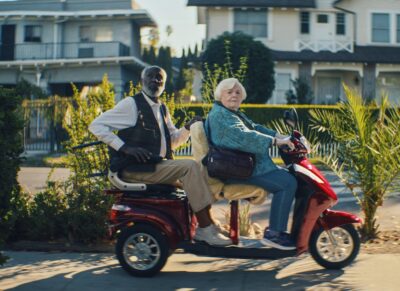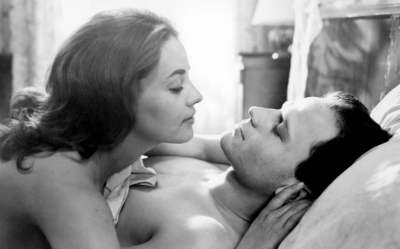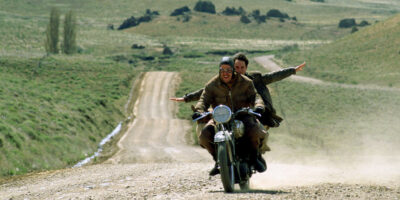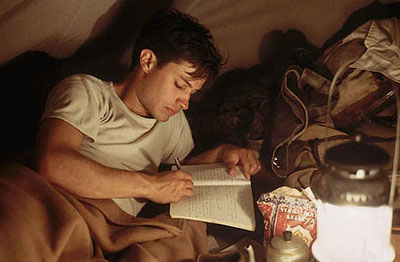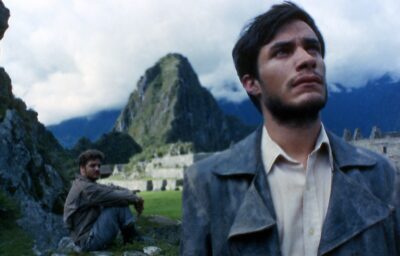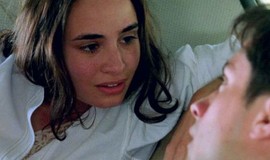Laemmle Theatres and the Anniversary Classic Series present this month’s screening in our popular Anniversary Classics Abroad program: Michelangelo Antonioni’s vibrant masterpiece RED DESERT, which won the Golden Lion at the Venice Film Festival in 1964 and collected rave reviews around the world on its release over the next several months. We will show the film at five of our theaters at 7 PM on Wednesday, July 31.
Antonioni had earned critical acclaim for the three movies in his “alienation trilogy”—’L’Avventura,’ ‘La Notte,’ and ‘Eclipse’ — made during the early 1960s. RED DESERT explored some of the same themes but introduced a new element to the director’s work. The three earlier movies were all shot in black-and-white, but with RED DESERT Antonioni decided to experiment with color cinematography for the first time, and critics heralded his achievement. The New Republic’s Stanley Kauffmann declared, “With Michelangelo Antonioni’s RED DESERT, the art of the film advances…quite simply, it is the best use of color I have ever seen in a film, exquisite in itself.” Kauffmann added, “there is a buried history of modern painting in it, from the Impressionists through Mondrian to Hopper and Wyeth.”
Monica Vitti, who had starred in all three of Antonioni’s earlier movies, has the leading role of Giuliana, the wife of an industrialist in Ravenna. She is emotionally troubled and eventually begins an affair with an employee at her husband’s factory. Carlo Chionetti plays the husband, and Richard Harris — fresh from his Oscar-nominated performance in Lindsay Anderson’s ‘This Sporting Life’ — plays her lover. Antonioni wrote the screenplay with frequent collaborator Tonino Guerra.
In addition to its psychological themes, the film offers prescient critique of industrial pollution, with the color cinematography contributing to this political commentary. A key collaborator was director of photography Carlo Di Palma, who worked closely with Antonioni to paint the landscapes when necessary to create the desired mood of malaise. Antonioni and Di Palma collaborated again on the director’s most successful movie, the English-language ‘Blowup,’ an Oscar nominee in 1966. Other directors around the world — including Ettore Scola, Bernardo Bertolucci, and Sidney Lumet — worked with Di Palma. The cinematographer later established a fruitful collaboration with Woody Allen on such films as ‘Hannah and Her Sisters,’ ‘Radio Days,’ and ‘Bullets Over Broadway.’
Time magazine called RED DESERT “at once the most beautiful, the most simple and the most daring film yet made by Italy’s masterful Michelangelo Antonioni.” More recently, Geoff Andrew of Time Out hailed “perhaps the most extraordinary and riveting film of Antonioni’s entire career.” Robbie Collin of London’s Daily Telegraph declared, “Almost half a century on, RED DESERT remains a film of rare beauty and brooding erotic intensity.” The New Yorker’s Richard Brody called the film Antonioni’s “most mysterious and awe-inspiring work.”
Screening one night only at the Royal in West Los Angeles, the Town Center in Encino, and Laemmle Theatres in Glendale, Claremont, and Newhall.

![Tickets: http://laemmle.com/film/suburbia | Subscribe: http://bit.ly/3b8JTym | When household tensions and a sense of worthlessness overcome Evan, he finds solace with the orphans of a throw-away society. The runaways hold on to each other like a family until a tragedy tears them apart.
Tickets: http://laemmle.com/film/suburbia
RELEASE DATE: 7/24/2024
Director: Penelope Spheeris
Cast: Bill Coyne, Chris Pedersen, Jennifer Clay, Timothy Eric O'Brien, Wade Walston, Mike B. The Flea
-----
ABOUT LAEMMLE: Since 1938, Laemmle [Theatres] has been showing the finest independent, arthouse, and international films.
Subscribe to Laemmle's E-NEWSLETTER: http://bit.ly/3y1YSTM
Visit Laemmle.com: http://laemmle.com
Like LAEMMLE on FACEBOOK: http://bit.ly/3Qspq7Z
Follow LAEMMLE on TWITTER: http://bit.ly/3O6adYv
Follow LAEMMLE on INSTAGRAM: http://bit.ly/3y2j1cp](https://90bb70.p3cdn2.secureserver.net/wp-content/plugins/feeds-for-youtube/img/placeholder.png)
